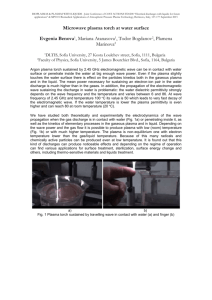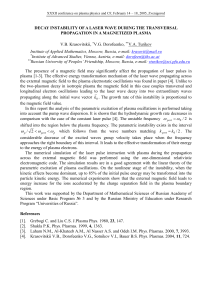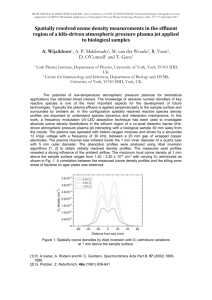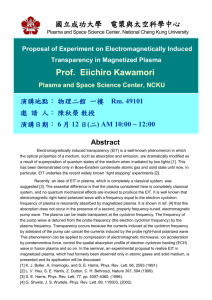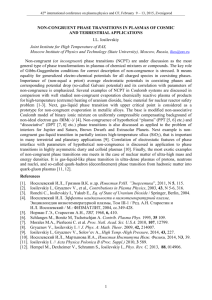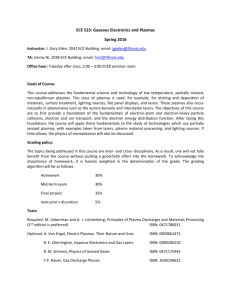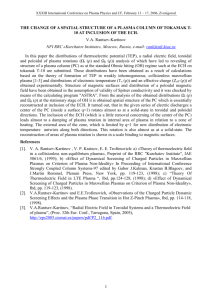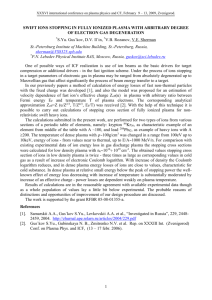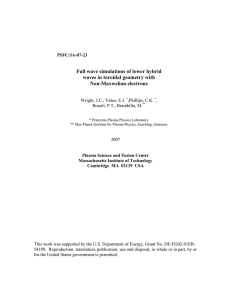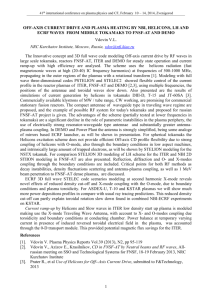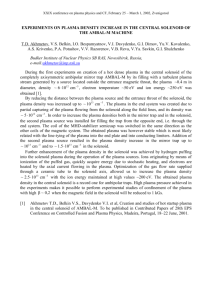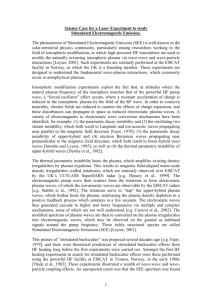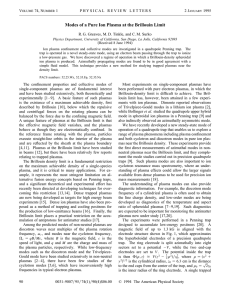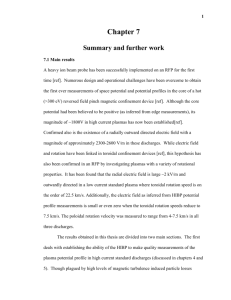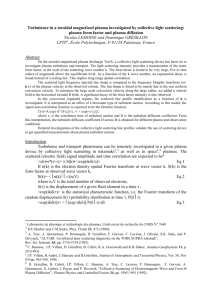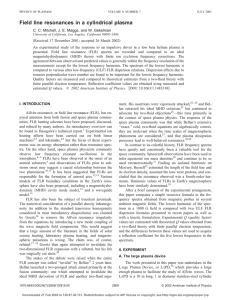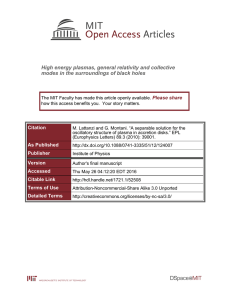investigation of slow and rapid waves coupling in cylindrical surface
advertisement
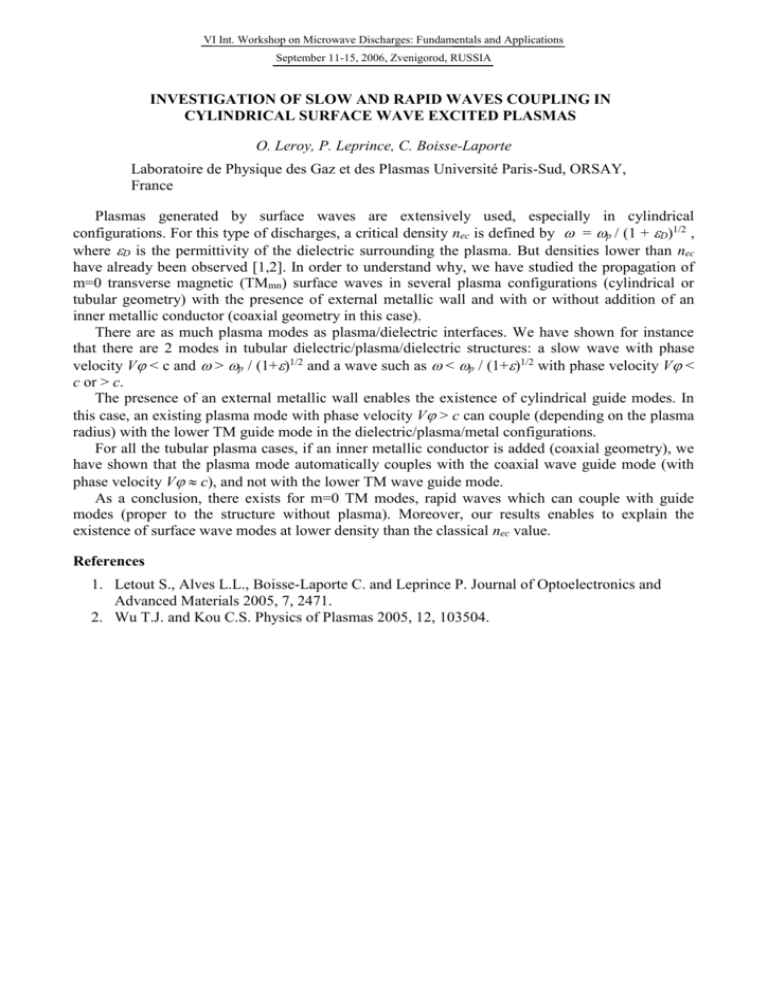
VI Int. Workshop on Microwave Discharges: Fundamentals and Applications September 11-15, 2006, Zvenigorod, RUSSIA INVESTIGATION OF SLOW AND RAPID WAVES COUPLING IN CYLINDRICAL SURFACE WAVE EXCITED PLASMAS O. Leroy, P. Leprince, C. Boisse-Laporte Laboratoire de Physique des Gaz et des Plasmas Université Paris-Sud, ORSAY, France Plasmas generated by surface waves are extensively used, especially in cylindrical configurations. For this type of discharges, a critical density nec is defined by = p / (1 + D)1/2 , where D is the permittivity of the dielectric surrounding the plasma. But densities lower than nec have already been observed [1,2]. In order to understand why, we have studied the propagation of m=0 transverse magnetic (TMmn) surface waves in several plasma configurations (cylindrical or tubular geometry) with the presence of external metallic wall and with or without addition of an inner metallic conductor (coaxial geometry in this case). There are as much plasma modes as plasma/dielectric interfaces. We have shown for instance that there are 2 modes in tubular dielectric/plasma/dielectric structures: a slow wave with phase velocity V < c and > p / (1+)1/2 and a wave such as < p / (1+)1/2 with phase velocity V < c or > c. The presence of an external metallic wall enables the existence of cylindrical guide modes. In this case, an existing plasma mode with phase velocity V > c can couple (depending on the plasma radius) with the lower TM guide mode in the dielectric/plasma/metal configurations. For all the tubular plasma cases, if an inner metallic conductor is added (coaxial geometry), we have shown that the plasma mode automatically couples with the coaxial wave guide mode (with phase velocity V c), and not with the lower TM wave guide mode. As a conclusion, there exists for m=0 TM modes, rapid waves which can couple with guide modes (proper to the structure without plasma). Moreover, our results enables to explain the existence of surface wave modes at lower density than the classical nec value. References 1. Letout S., Alves L.L., Boisse-Laporte C. and Leprince P. Journal of Optoelectronics and Advanced Materials 2005, 7, 2471. 2. Wu T.J. and Kou C.S. Physics of Plasmas 2005, 12, 103504.
